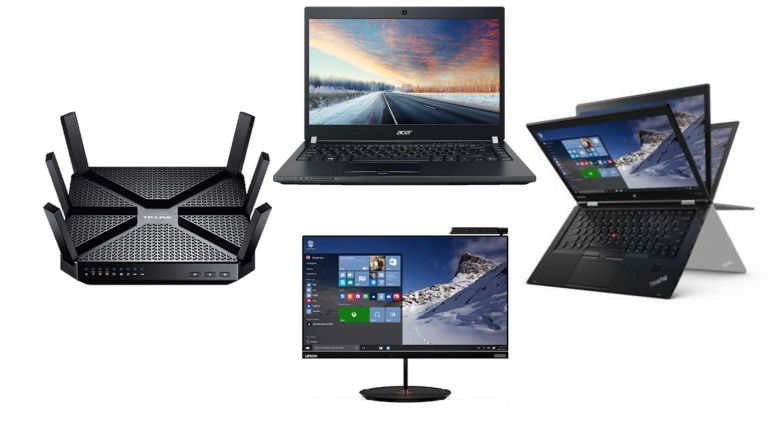Wi-Fi Alliance launches WiGig device certification

The Wi-Fi Alliance (WECA) is beginning to certify routers, smartphones, laptops and other devices that support the wireless standard of this 802.11ad WiGig. Starting next year, they will be available on the market for all users. Start of certification - the first signal for the full deployment of high-speed networks in 2017.
The WiGig standard operates in the 60GHz range. It will complement existing wireless networks that operate in the 2.4GHz and 5GHz spectrum. The creators promise that wireless technology is comparable in response and speed to wired. Most modern routers, smartphones and other gadgets support the standard 802.11ac, where the speed often does not exceed a couple of gigabits per second. The theoretical ceiling for WiGig is 8Gbps.
“WECA certification has a rich history of rapid, widespread adoption of technology across the industry. We expect 2017 to be a breakthrough for WiGig. The WiGig ecosystem covers the mobile, PC and consumer electronics industry through consumers, companies and service providers. The devices will use the brand and the ubiquity of Wi-Fi for further movement through these industries, ”said Phil Solis, director of research at ABI Research.
WiGig is a small-area wireless network. It works only at short distances, about 10 meters. Therefore, if you take a tablet, smartphone or laptop that supports this technology, you need to be prepared for the device to operate at WiGig speeds only in the room where the router is located.
Despite this limitation, technology offers many possibilities. It will greatly facilitate the life of the owners of VR-devices. Today, if you want to connect a virtual reality helmet to a PC or console, it must be tied with a network of thick cables, since existing wireless standards are not fast enough. This limits movement and total immersion into virtual reality. Connecting a helmet to a computer without wires requires high speed and low signal delay — less than 10 milliseconds. All this is promised in WiGig.
Oculus Rift and HTC Vive have gained special popularity in the virtual reality helmet market. Both helmets are similar in many technical parameters, including they require a wired connection. In the case of Vave, a user in roomscale mode needs to walk around the room to fully immerse, but the wires prevent them from doing this and literally chain them to the computer.
This difficulty is trying to help overcome third-party companies. Thus, the Bulgarian startup Quark proposes to use a paired Wi-Fi module: one connects to the helmet, the other to the computer. True, the main problem - the signal delay between the VR device and the PC - has not yet been eliminated. Most likely, WiGig will solve this problem in the future.
In the office, WiGig can be used to project images and videos onto a large screen in a conference room with very low latency, integrate office technology into one network without wires, and quickly share large files.
WiGig will be fast enough to support simultaneous 4K video streaming to multiple devices and replace HDMI cables. In the "smart" home network will allow you to connect gadgets located in the same room. Mobile operators can use it for high-bandwidth communications between cells and wired networks. The cellular world is also considering a spectrum of millimeter waves, including 60 GHz, for the construction of 5G networks in the near future. WiGig gadgets support continuous communication with a smooth transition between the 2.4 GHz, 5 GHz and 60 GHz bands. All WiGig devices are backward compatible with products that operate in the 2.4GHz and 5GHz bands.
According to ABI Research, in 2017, 180 million 802.11ad chips will be supplied for smartphones. In 2021, they will occupy more than half of the market. WECA claims that all multi-band devices will be backward compatible with more than 8 billion Wi-Fi products deployed.
Edgar Figueroa, President and CEO of WECA, notes that “Wi-Fi has been satisfying user needs for over 15 years. WiGig will provide even higher performance in a rich range of devices. It expands the range of Wi-Fi at 60 GHz, and also increases the existing development of Wi-Fi programs and technologies.
In Russia, WiGig officially alloweduse February 29, 2016. At the next meeting, the State Commission for Radio Frequencies decided to use the 57-66GHz frequency range for IEEE 802.11ad standard devices. The corresponding changes were made to the decision of the State Committee on Radio Frequencies on May 7, 2007 “On the allocation of radio frequency bands to short-range devices”.
The 802.11ad communication standard is not new: it was introduced for the first time in May 2009. In accordance with the Memorandum of Understanding, which was achieved in 2013, WECA teamed up with the WiGig Alliance.. By combining their efforts, the companies planned to release certified products in 2016. But the technical problems associated with communication at extremely high frequencies, took extra time. In addition, WECA had to wait until a wide range of products appeared to check for interoperability.
The first products that have been tested for interoperability and have been certified:
- Dell Latitude E7450 / 70
- Intel Tri-Band Wireless
- Peraso 60GHz USB Adapter Reference Design Kit
- Qualcomm Technologies 802.11ad Wi-Fi router (based on QCA9500 chipset)
- Socionext 802.11ad Reference Adapter
